
The Majestic Amphitheaters of Bryce Canyon National Park
Explore the stunning hoodoos and breathtaking vistas of Bryce Canyon National Park, a geological wonderland in Utah's red rock country.
Bryce Canyon National Park in Utah is a geological wonder that enchants visitors with its stunning red rock formations and sprawling amphitheaters. Known for its unique hoodoos—tall, thin spires of rock that rise spectacularly from the canyon floor—the park offers breathtaking views and an array of hiking trails that cater to both novice and experienced hikers. One of the most popular viewpoints is Sunrise Point, where you can witness the canyon bathed in the soft glow of morning light. For a deeper exploration, the Navajo Loop Trail takes you down into the heart of the canyon, winding through towering hoodoos and offering close-up views of the park's intricate rock formations. Don't miss the Rim Trail, which provides panoramic views of the entire amphitheater. Bryce Canyon is also a stargazer's paradise. The park's remote location and high elevation make it one of the darkest places in the United States, perfect for observing the Milky Way and other celestial wonders. The Bryce Canyon Astronomy Festival, held annually, is a must-attend event for astronomy enthusiasts. Whether you're there to hike, photograph, or simply take in the awe-inspiring scenery, Bryce Canyon National Park offers a unique and unforgettable experience for all who visit.
Local tips in Bryce Canyon National Park
- Visit during the shoulder seasons of spring and fall to avoid the summer crowds and enjoy milder temperatures.
- Wear layered clothing, as temperatures can vary significantly between day and night.
- Bring plenty of water and snacks, especially if you plan on hiking the longer trails.
- Check the park's website for any trail closures or weather advisories before you go.
- Consider attending a ranger-led program to learn more about the park's geology and history.
- Make sure to bring a good camera or smartphone to capture the stunning landscapes.
The Majestic Amphitheaters of Bryce Canyon National Park
Bryce Canyon National Park in Utah is a geological wonder that enchants visitors with its stunning red rock formations and sprawling amphitheaters. Known for its unique hoodoos—tall, thin spires of rock that rise spectacularly from the canyon floor—the park offers breathtaking views and an array of hiking trails that cater to both novice and experienced hikers. One of the most popular viewpoints is Sunrise Point, where you can witness the canyon bathed in the soft glow of morning light. For a deeper exploration, the Navajo Loop Trail takes you down into the heart of the canyon, winding through towering hoodoos and offering close-up views of the park's intricate rock formations. Don't miss the Rim Trail, which provides panoramic views of the entire amphitheater. Bryce Canyon is also a stargazer's paradise. The park's remote location and high elevation make it one of the darkest places in the United States, perfect for observing the Milky Way and other celestial wonders. The Bryce Canyon Astronomy Festival, held annually, is a must-attend event for astronomy enthusiasts. Whether you're there to hike, photograph, or simply take in the awe-inspiring scenery, Bryce Canyon National Park offers a unique and unforgettable experience for all who visit.
When is the best time to go to Bryce Canyon National Park?
Iconic landmarks you can’t miss
Bryce Canyon National Park Visitor Center
Explore the breathtaking landscapes and rich history of Bryce Canyon National Park Visitor Center, your gateway to adventure in Utah's stunning wilderness.
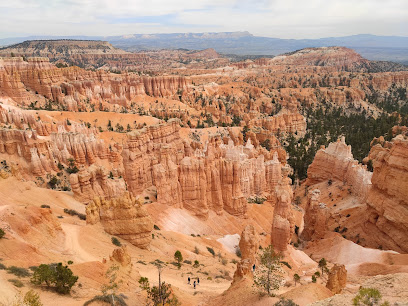
Grand Staircase-Escalante National Monument
Experience the breathtaking landscapes and rich biodiversity of Grand Staircase-Escalante National Monument, a must-visit nature preserve in Utah.
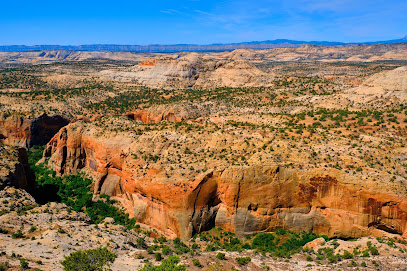
Bryce Canyon National Park Sunset Point
Discover the stunning vistas of Bryce Canyon National Park's Sunset Point, a must-see for every nature lover and photographer in Utah.
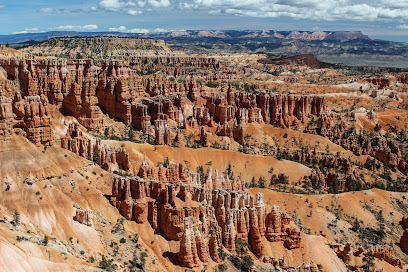
Cedar Breaks National Monument
Discover the stunning beauty of Cedar Breaks National Monument, a breathtaking natural amphitheater in Utah, perfect for hiking, wildlife watching, and photography.

Bryce Canyon National Park Sunrise Point
Discover the breathtaking sunrise views at Bryce Canyon National Park's Sunrise Point, where vibrant hoodoos meet the dawn's light.
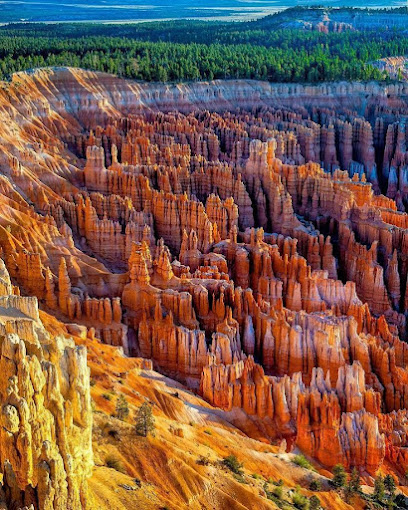
Bryce Point
Experience the breathtaking views at Bryce Point, a stunning vista in Bryce Canyon National Park, where nature's artistry unfolds in vibrant colors.
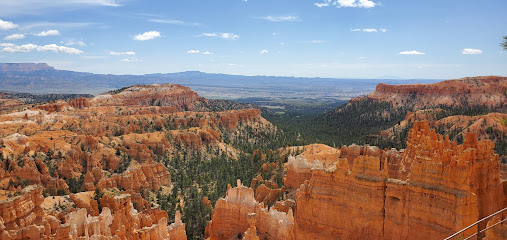
Natural Bridge
Discover the breathtaking beauty of Natural Bridge in Bryce Canyon National Park, a stunning testament to nature's artistry and geological wonders.
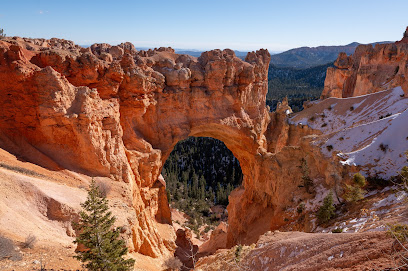
Lower Inspiration Point
Discover the stunning vistas at Lower Inspiration Point, a must-visit destination in Bryce Canyon National Park, Utah, renowned for its unique geological formations.
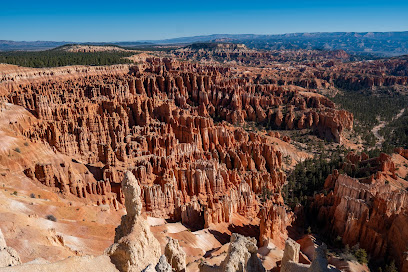
Red Canyon Arch
Experience the breathtaking beauty of Red Canyon Arch, a scenic gem in Utah that welcomes adventurers and nature lovers alike.
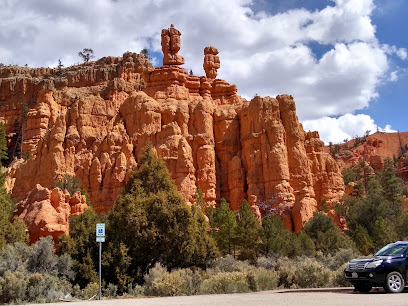
Fairyland Point
Discover stunning panoramic views and vibrant landscapes at Fairyland Point in Bryce Canyon National Park, a must-visit for every nature enthusiast.
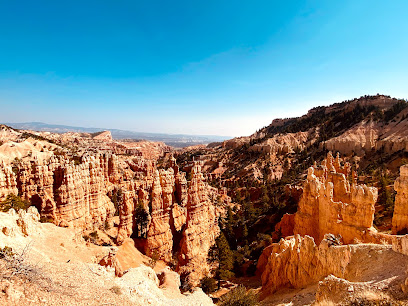
Peek-a-boo slot Canyon
Discover the captivating beauty of Peek-a-boo Slot Canyon in Utah, where stunning rock formations and breathtaking landscapes await outdoor enthusiasts.
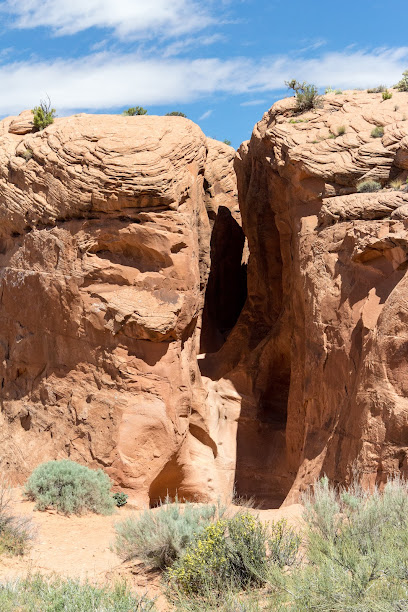
Spooky Slot Canyon
Explore Spooky Slot Canyon, a stunning hiking area in Utah that offers breathtaking views, unique geological formations, and a memorable outdoor adventure.
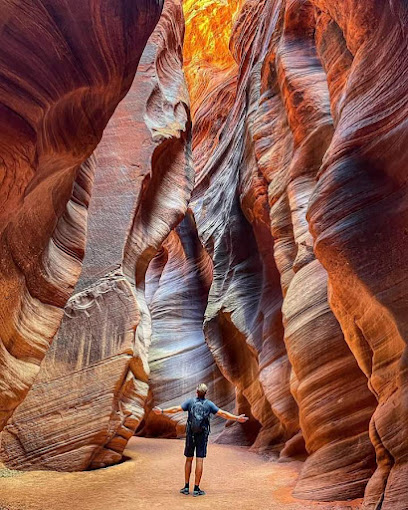
Wall Street
Experience the breathtaking beauty of Wall Street in Bryce Canyon National Park, a premier hiking destination showcasing stunning hoodoos and vibrant landscapes.
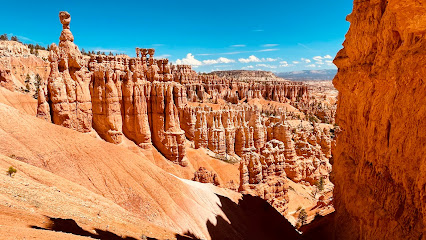
Paria View
Discover breathtaking views and serene landscapes at Paria View in Bryce Canyon, a hidden gem for nature lovers and photographers.
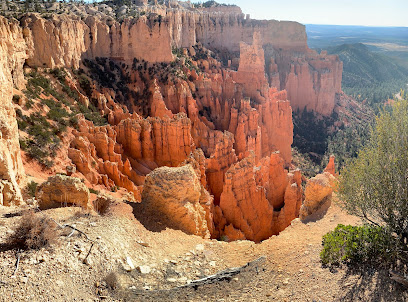
Farview Point
Experience the stunning vistas of Farview Point in Bryce Canyon National Park, a must-visit scenic spot for nature lovers and photographers.
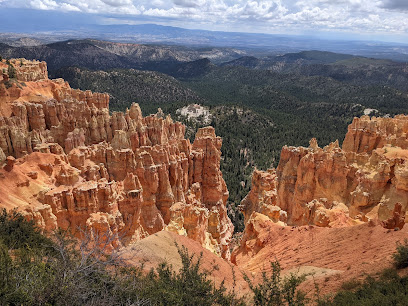
Unmissable attractions to see
Zion National Park
Explore Zion National Park, a breathtaking natural wonder in Utah with stunning canyons, diverse wildlife, and endless outdoor adventures.
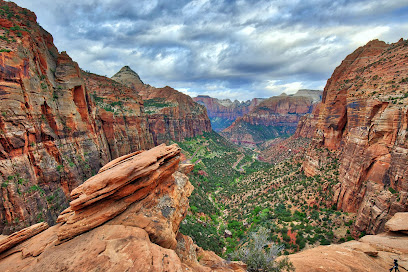
Goblin Valley State Park
Explore the whimsical rock formations of Goblin Valley State Park in Utah, a unique destination for adventure and breathtaking natural beauty.

Coral Pink Sand Dunes State Park
Experience the stunning pink sands and diverse wildlife at Coral Pink Sand Dunes State Park, a breathtaking natural attraction in Utah.
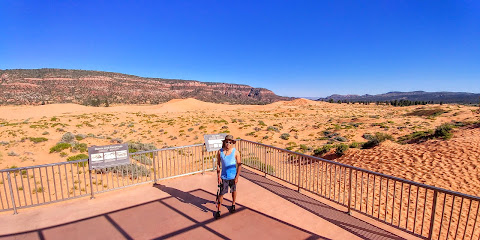
Cedar Breaks National Monument
Explore Cedar Breaks National Monument, a breathtaking natural amphitheater in Utah, renowned for its stunning vistas and vibrant wildflower meadows.

The Lodge at Bryce Canyon
Discover the beauty of Bryce Canyon National Park while enjoying comfortable accommodations at The Lodge at Bryce Canyon.
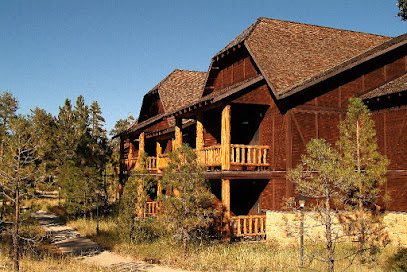
Moqui Cave
Explore Moqui Cave: A Natural History Museum and Geological Wonder in Kanab, Utah, Showcasing Ancient Artifacts and Stunning Rock Formations.
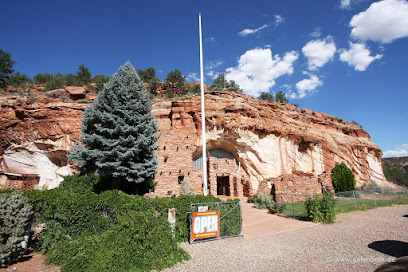
Bryce Canyon National Park Sunrise Point
Experience the breathtaking sunrise at Bryce Canyon's Sunrise Point, where vibrant colors paint the iconic hoodoos and create unforgettable memories.
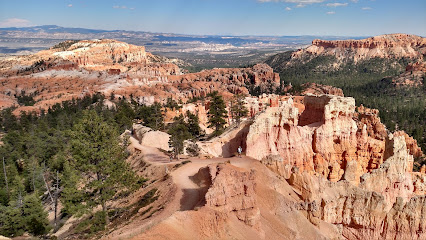
Bryce Point
Explore the breathtaking beauty of Bryce Point, where stunning vistas of Bryce Canyon's iconic hoodoos and vibrant landscapes await every visitor.
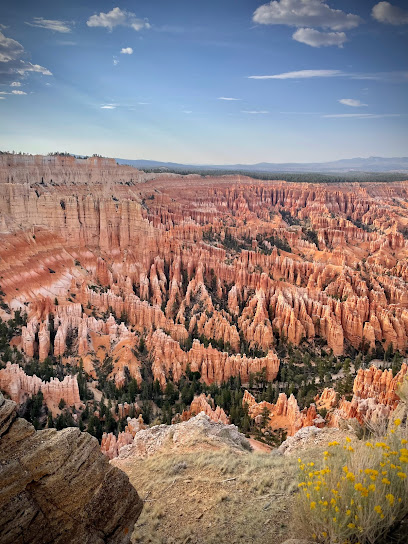
Parowan Gap Petroglyphs
Discover the ancient rock art of the Parowan Gap Petroglyphs in Utah, where history and nature unite in a breathtaking landscape.
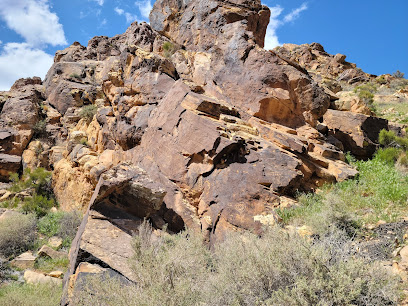
Lower Inspiration Point
Discover breathtaking views and natural beauty at Lower Inspiration Point, a highlight of Bryce Canyon National Park that captivates every visitor.
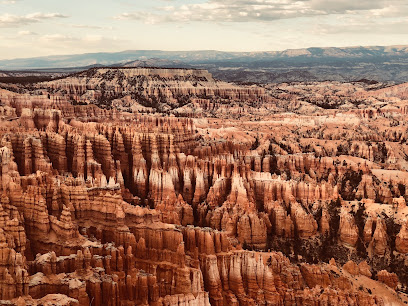
Escalante Petrified Forest State Park
Explore the stunning landscapes and ancient petrified wood at Escalante Petrified Forest State Park in Utah, a must-visit for nature lovers and adventurers.
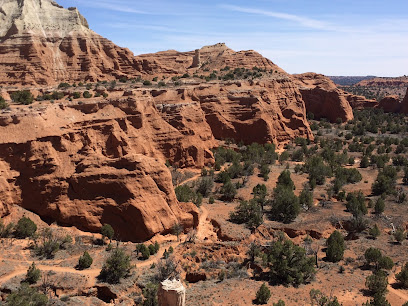
Toadstool Hoodoos
Explore the mesmerizing Toadstool Hoodoos in Kanab, Utah, where unique rock formations and scenic hiking trails await adventure seekers and nature lovers.
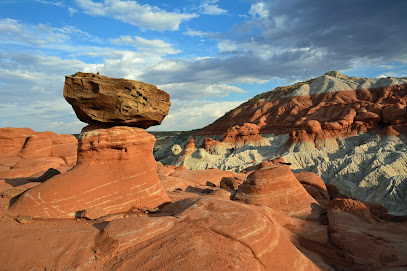
Temple of Sinawava
Experience the breathtaking beauty of the Temple of Sinawava, the gateway to the stunning Narrows in Zion National Park, Utah.
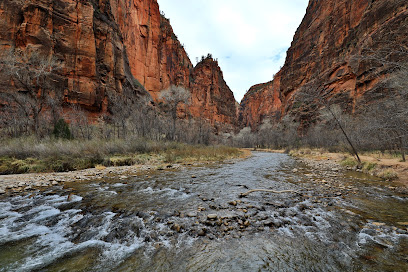
Head of the Rocks Overlook
Experience the stunning vistas and serene beauty of Head of the Rocks Overlook in Escalante, Utah, a must-visit destination for nature lovers.

The Zion-Mount Carmel Tunnel
Explore the iconic Zion-Mount Carmel Tunnel, a stunning engineering marvel in Zion National Park, offering breathtaking views and unforgettable experiences.
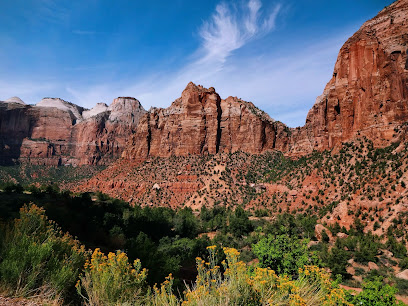
Essential places to dine
Ruby's Inn Cowboy's Buffet & Steak Room
Experience hearty meals at Ruby's Inn Cowboy's Buffet & Steak Room near Bryce Canyon; perfect for adventurers seeking delicious steak and local flavors.
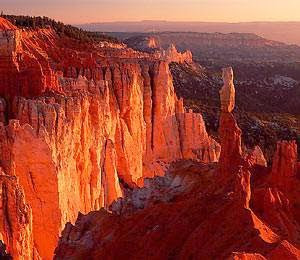
Bryce Canyon Pines Restaurant
Discover delicious American comfort food at Bryce Canyon Pines Restaurant near breathtaking Bryce Canyon National Park.
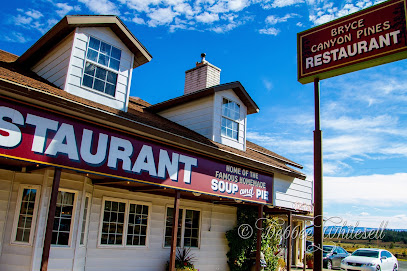
Pizza Place
Experience mouth-watering pizzas made with fresh ingredients in Tropic, Utah – perfect after exploring Bryce Canyon National Park.
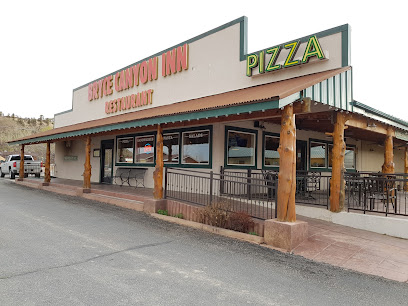
Ebenezer's Barn and Grill Dinner Show
Discover the perfect fusion of country cuisine and captivating entertainment at Ebenezer's Barn and Grill in Bryce Canyon City.
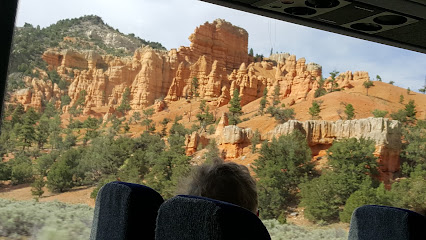
Cowboy Ranch House Bar & Restaurant
Savor mouthwatering steaks and family-friendly dining at Cowboy Ranch House Bar & Restaurant in scenic Bryce Canyon City.
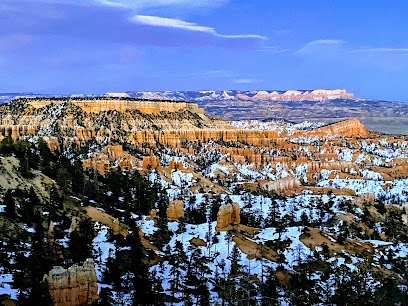
Canyon Diner
Enjoy quick and satisfying meals at Canyon Diner, your go-to fast food spot near Bryce Canyon National Park.
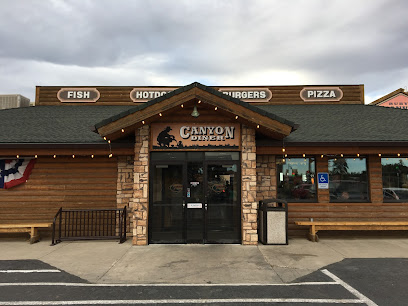
Subway
Enjoy fresh and customizable sandwiches at Subway near Bryce Canyon National Park – perfect for adventurers seeking delicious meals on-the-go.
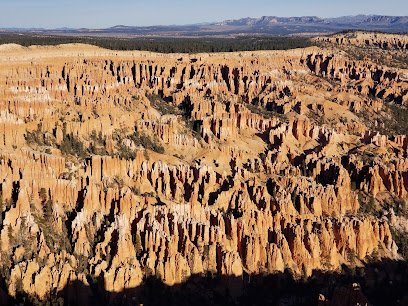
Dining Room at The Lodge at Bryce Canyon
Experience exceptional dining with stunning canyon views at The Dining Room in Bryce Canyon National Park.
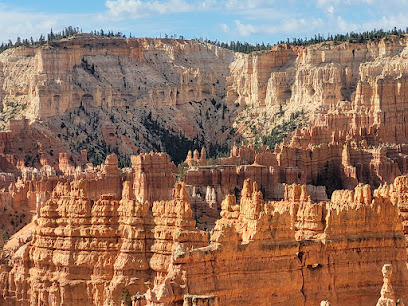
Markets, malls and hidden boutiques
Bryce Canyon National Park
Discover the enchanting beauty of Bryce Canyon National Park, where breathtaking rock formations and vibrant colors create a paradise for nature lovers.
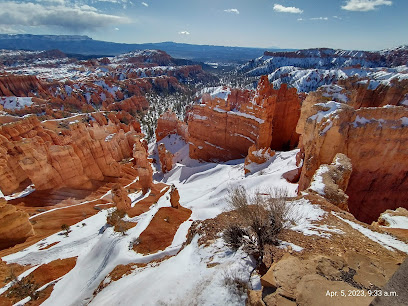
Bryce Canyon National Park Visitor Center
Explore the captivating Bryce Canyon National Park Visitor Center, your entryway to stunning landscapes and rich natural history in Utah.
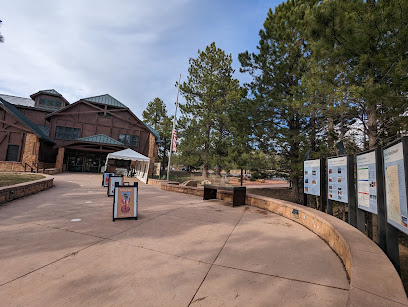
Bryce Canyon National Park Sunset Point
Experience breathtaking views at Sunset Point in Bryce Canyon National Park, where vibrant sunsets illuminate iconic hoodoo rock formations.
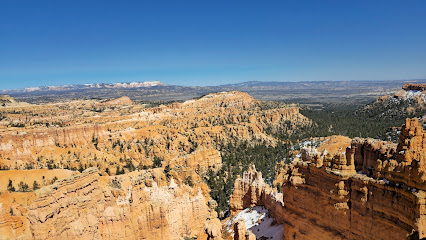
Ruby’s Inn General Store
Discover all your adventure needs at Ruby’s Inn General Store, the perfect stop for campers and tourists in Bryce Canyon National Park.
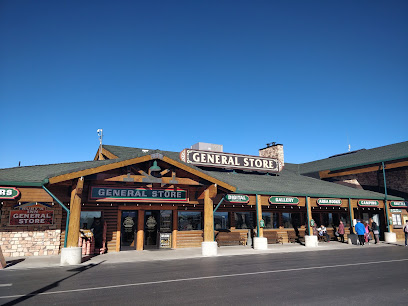
Bryce Canyon National Park Sunrise Point
Discover the breathtaking vistas of Bryce Canyon at Sunrise Point, where every sunrise unveils nature's palette of colors in stunning rock formations.
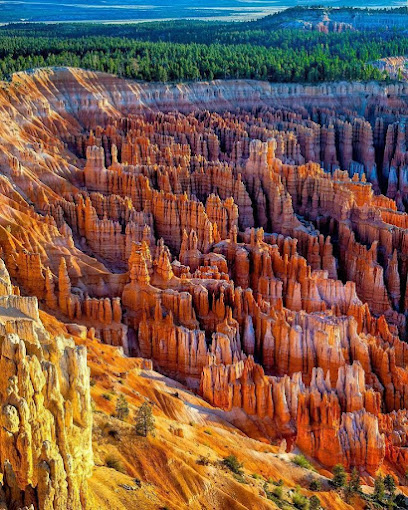
Natural Bridge
Discover the stunning Natural Bridge in Bryce Canyon National Park, a remarkable scenic spot showcasing nature's artistry and beauty.
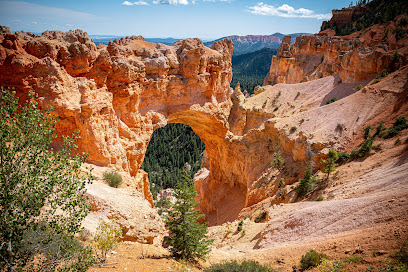
Bryce Canyon Coffee Co.
Experience the charm of Bryce Canyon Coffee Co., your go-to coffee shop near Bryce Canyon National Park, offering artisanal brews and a cozy atmosphere.
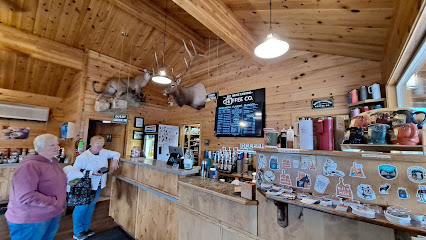
White Mountain Trading Post
Explore the charming White Mountain Trading Post in Orderville, Utah, for unique souvenirs and local crafts that capture the spirit of your travels.
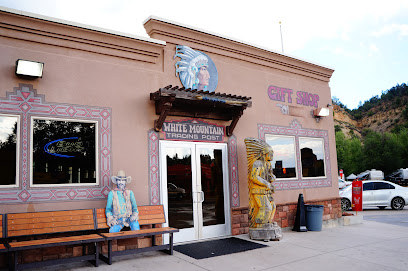
Clark's Country Market
Experience the charm of Clark's Country Market in Tropic, UT, your go-to destination for local produce and unique finds in the heart of Utah.
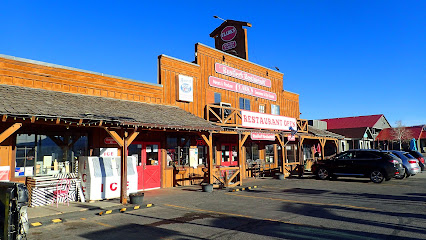
Bryce Canyon Sinclair Gas Station/ Mini Mart
Explore Bryce Canyon with convenience at Sinclair Gas Station & Mini Mart, your go-to stop for fuel, snacks, and travel essentials.
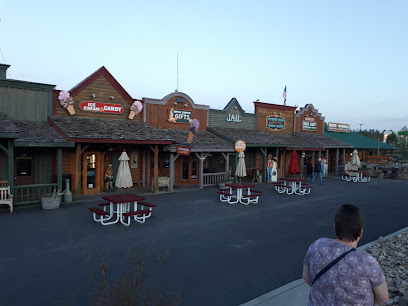
Peekaboo Loop, Hat Shop, And Under-The-Rim Trail Trailhead
Discover breathtaking views and unique rock formations on the Peekaboo Loop Trail at Bryce Canyon National Park, a must-visit for all adventurers.
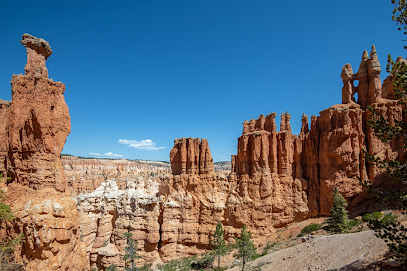
Bryce Canyon Trading Post
Explore the essence of Native American culture at Bryce Canyon Trading Post, where authenticity meets artistry in a stunning setting.
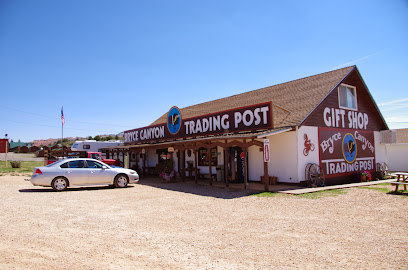
North Campground General Store
Discover the North Campground General Store in Bryce Canyon National Park for essential supplies and unique souvenirs amidst stunning landscapes.
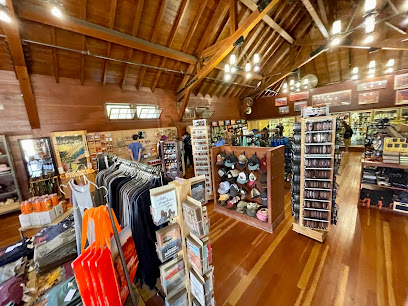
Old Bryce Town
Explore Old Bryce Town, a charming shopping hub in Bryce Canyon City offering unique gifts and local artisan crafts amidst stunning landscapes.
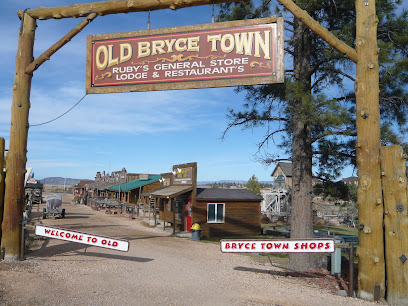
Bryce Canyon Rock Shop
Explore unique geological treasures and local crafts at Bryce Canyon Rock Shop, the perfect stop for tourists and geology enthusiasts alike.
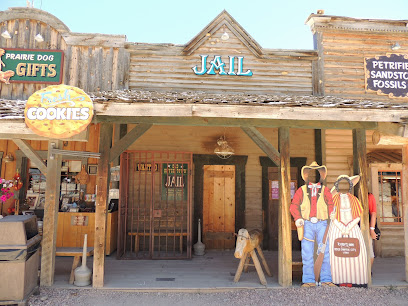
Essential bars & hidden hideouts
Bryce Canyon National Park Visitor Center
Discover the stunning landscapes and rich history at the Bryce Canyon National Park Visitor Center, the perfect starting point for your adventure.

Best Western Plus Ruby's Inn
Discover the comfort and convenience of Best Western Plus Ruby's Inn, your ideal base for exploring Bryce Canyon National Park.

Ruby's Inn Cowboy's Buffet & Steak Room
Experience the heart of the Wild West with delicious buffet and steak options at Ruby's Inn Cowboy's Buffet & Steak Room, near Bryce Canyon.
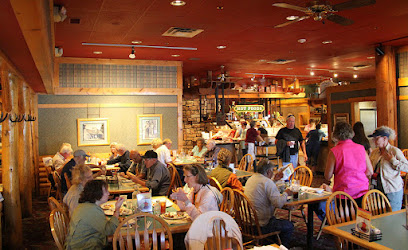
Bryce Canyon National Park Sunset Point
Experience the unparalleled beauty of Bryce Canyon National Park at Sunset Point, where stunning vistas and vibrant landscapes await every visitor.
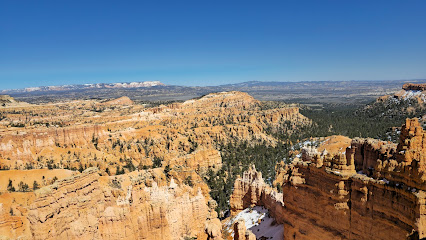
Bryce Canyon Pines Restaurant
Experience delicious American cuisine at Bryce Canyon Pines Restaurant, a favorite stop for tourists exploring the breathtaking landscapes of Bryce Canyon.
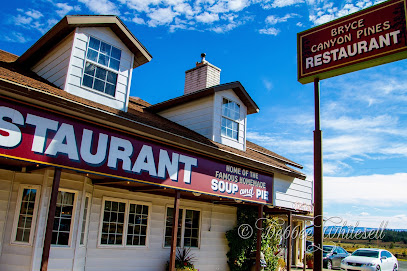
Zion Canyon Brew Pub
Discover the best of craft brewing and local cuisine at Zion Canyon Brew Pub, your gateway to culinary adventures in stunning Zion National Park.
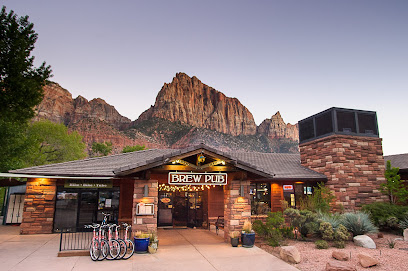
Best Western Plus Bryce Canyon Grand Hotel
Experience unmatched comfort and stunning natural beauty at Best Western Plus Bryce Canyon Grand Hotel, a perfect base for your Utah adventures.
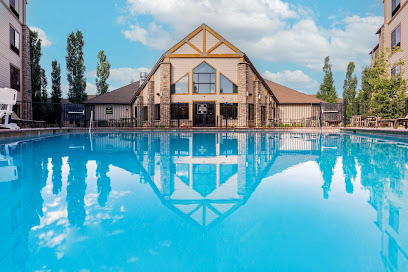
The Lodge at Bryce Canyon
Experience the stunning landscapes of Bryce Canyon at The Lodge, where comfort meets natural beauty in a breathtaking national park setting.

Bryce Canyon Resort
Discover the magic of Bryce Canyon Resort, your ideal base for exploring breathtaking landscapes and creating unforgettable memories in Utah.

Bryce Canyon National Park Sunrise Point
Discover the breathtaking beauty of Bryce Canyon National Park Sunrise Point, where vibrant colors paint the sky at dawn over iconic hoodoos.

i.d.k. barbecue
Experience authentic barbecue in Tropic, Utah with mouthwatering smoked meats and a warm, inviting atmosphere at i.d.k. barbecue.
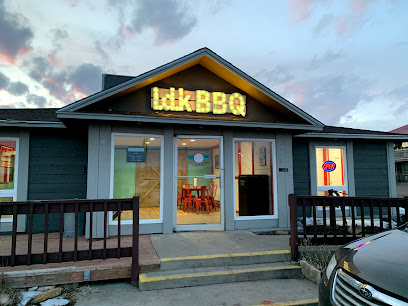
Ebenezer's Barn and Grill Dinner Show
Experience authentic country cuisine and captivating live entertainment at Ebenezer's Barn and Grill in Bryce Canyon City.
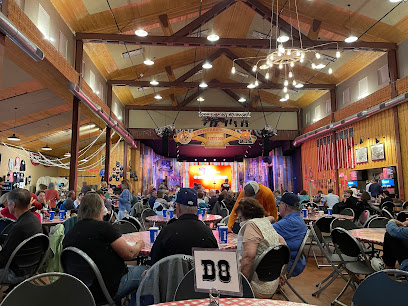
Quality Inn Bryce Canyon
Discover comfort and convenience at Quality Inn Bryce Canyon, your gateway to the stunning landscapes of Utah's Bryce Canyon National Park.
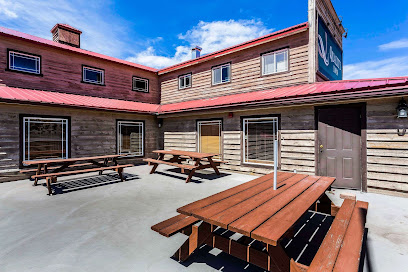
Cowboy Ranch House Bar & Restaurant
Savor mouthwatering steaks and hearty bar fare in a rustic setting at Cowboy Ranch House Bar & Restaurant, a family-friendly dining experience in Bryce Canyon City.

Canyon Diner
Experience quick and delicious meals at Canyon Diner, the perfect fast-food stop near Bryce Canyon National Park.
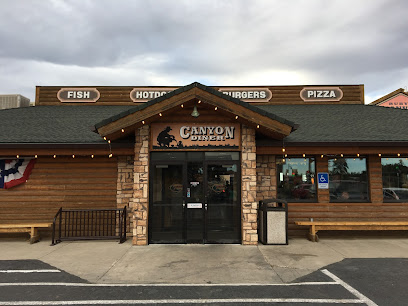
Local Phrases about Bryce Canyon National Park
-
- HelloYa'at'eeh
[yah-ah-tay] - GoodbyeAhe'hee'
[ah-hay-hee] - YesDóó
[doh] - NoT'áá
[tah-ah] - Please/You're welcomeShaa'íí
[shah-ee] - Thank youAhéhee'
[ah-hay-hee] - Excuse me/SorryAwee'
[ah-way] - How are you?Yá'át'ééh?
[yah-ah-tay] - Fine. And you?T'áá hwó'ají
[tah-ah whoa-hee] - Do you speak English?Dóó bizaad yaa niil'í?
[doh bih-zahd yah nee-lee] - I don't understandT'áá hwó'ají
[tah-ah whoa-hee]
- HelloYa'at'eeh
-
- I'd like to see the menu, pleaseNíłchʼi dine'é hastiin
[neel-chi dee-nay has-teen] - I don't eat meatTó éí íiyisíí
[toh ay ee-yee-see] - Cheers!Yá'át'ééh
[yah-ah-tay] - I would like to pay, pleaseNíłchʼi dine'é hastiin
[neel-chi dee-nay has-teen]
- I'd like to see the menu, pleaseNíłchʼi dine'é hastiin
-
- Help!Aa'ii
[ah-ee] - Go away!Go away!
[Go away!] - Call the Police!Keʼi yishtłizh
[key-ee yish-tleezh] - Call a doctor!Keʼi yishtłizh
[key-ee yish-tleezh] - I'm lostT'áá hwó'ají
[tah-ah whoa-hee] - I'm illT'áá hwó'ají
[tah-ah whoa-hee]
- Help!Aa'ii
-
- I'd like to buy...Níłchʼi dine'é hastiin
[neel-chi dee-nay has-teen] - I'm just lookingNíłchʼi dine'é hastiin
[neel-chi dee-nay has-teen] - How much is it?Háásh nitsaa?
[hah-sh nee-tsah] - That's too expensiveKiníí
[kee-nee] - Can you lower the price?Haa shoodí
[hah shoh-dee]
- I'd like to buy...Níłchʼi dine'é hastiin
-
- What time is it?Háásh baa naniná?
[hah-sh bah nah-nee-nah] - It's one o'clockHáásh baa naniná?
[hah-sh bah nah-nee-nah] - Half past (10)Háásh baa naniná?
[hah-sh bah nah-nee-nah] - MorningYá'át'ééh
[yah-ah-tay] - AfternoonT'áá hwó'ají
[tah-ah whoa-hee] - EveningKiníí
[kee-nee] - YesterdayDóó
[doh] - TodayT'áá hwó'ají
[tah-ah whoa-hee] - TomorrowT'áá hwó'ají
[tah-ah whoa-hee] - 1Dóó
[doh] - 2Naaki
[nah-kee] - 3Táá
[tah-ah] - 4Dį́į́'
[dih-ih] - 5Ashdla'
[ah-shd-lah] - 6Hachéé'
[hah-chay] - 7Tódí
[toh-dee] - 8Náhást'éí
[nah-hah-stay-ee] - 9Tseebíí
[tsee-bee] - 10Ashdla'
[ah-shd-lah]
- What time is it?Háásh baa naniná?
-
- Where's a/the...?Háadish niłchʼi?
[hah-ah-deesh neel-chi] - What's the address?Háadish niłchʼi?
[hah-ah-deesh neel-chi] - Can you show me (on the map)?Háadish niłchʼi?
[hah-ah-deesh neel-chi] - When's the next (bus)?Haashké yinishyé?
[hah-shkay yin-ee-shyay] - A ticket (to ....)Kéyah
[kay-yah]
- Where's a/the...?Háadish niłchʼi?
History of Bryce Canyon National Park
-
Long before European settlers arrived, the area now known as Bryce Canyon National Park was inhabited by Native American tribes, specifically the Paiute people. The Paiute called the area 'Angka-ku-wass-a-wits,' or 'red-painted faces,' referring to the colorful hoodoos. They believed these rock formations were the petrified remains of ancient beings who were turned to stone by the trickster god, Coyote. Evidence of their presence can be seen in the form of petroglyphs and artifacts found throughout the park.
-
In the mid-19th century, Mormon pioneers began to settle in the region. In 1875, Ebenezer Bryce and his family moved to the area and established a homestead. Bryce, a Scottish immigrant and member of The Church of Jesus Christ of Latter-day Saints, was a significant figure in the early development of the area. He built a road into the canyon to access timber, and locals began to refer to the canyon as 'Bryce's Canyon.' His influence and the name stuck, eventually becoming the official name of the park.
-
The unique geology of Bryce Canyon began to attract attention in the early 20th century. In 1923, President Warren G. Harding designated the area as Bryce Canyon National Monument. This designation was part of a broader effort to preserve the natural beauty and geological significance of the American West. The monument status helped protect the canyon's unique hoodoos, spires, and natural amphitheaters from development and exploitation.
-
The growing popularity of Bryce Canyon led to its reclassification as Bryce Canyon National Park in 1928. This change, signed into law by President Calvin Coolidge, provided additional protection and funding for the park. It also led to the construction of visitor facilities, including roads, trails, and the Bryce Canyon Lodge. The establishment of the park helped to boost tourism in the region and solidified Bryce Canyon's status as a national treasure.
-
Bryce Canyon National Park is renowned for its geological formations, particularly the hoodoos—tall, thin spires of rock formed by the forces of erosion. The park is located within the Colorado Plateau, and its geology is a testament to millions of years of sedimentation, uplift, and erosion. The vibrant colors of the rock layers tell a story of ancient environments, including seas, deserts, and lakes that once covered the region. This geological diversity makes Bryce Canyon a valuable site for scientific study and education.
-
Bryce Canyon has had a significant cultural impact, inspiring artists, writers, and filmmakers. The park's otherworldly landscapes have been featured in numerous films, television shows, and works of art. Its stunning vistas and unique geological formations continue to captivate visitors from around the world. The cultural heritage of the Paiute people and the contributions of early settlers like Ebenezer Bryce are commemorated through interpretive programs and exhibits, ensuring that the history and culture of Bryce Canyon are preserved for future generations.
Bryce Canyon National Park Essentials
-
Bryce Canyon National Park is located in southern Utah. The nearest major airport is McCarran International Airport in Las Vegas, Nevada, approximately 270 miles away. Alternatively, Salt Lake City International Airport is about 280 miles away. From either airport, you can rent a car and drive to the park. The most common route from Las Vegas is via Interstate 15 North to Highway 9 East, then Highway 89 North, and finally Highway 12 East. From Salt Lake City, take Interstate 15 South, then Highway 20 East, and finally Highway 89 South to Highway 12 East.
-
Once in Bryce Canyon National Park, the best way to get around is by car. There is also a free shuttle service that operates from late April to mid-October, which stops at major viewpoints and trailheads. Bicycles are allowed on paved roads but not on hiking trails. For those who prefer guided tours, there are several options available, including horseback riding tours and ranger-led programs.
-
The official currency in the United States is the US Dollar (USD). Credit cards are widely accepted in the park, including at the Visitor Center, campgrounds, and the park lodges. ATMs are available at the Bryce Canyon Lodge and in nearby Bryce Canyon City. It is advisable to carry some cash for smaller vendors or in case of technical issues with card payments.
-
Bryce Canyon National Park is generally very safe for tourists. However, standard safety precautions should be taken. Always stay on marked trails and avoid hiking alone. Be prepared for rapid weather changes, and carry plenty of water. There are no high-crime areas targeting tourists within the park, but it's always best to keep an eye on your belongings and lock your vehicle when not in use.
-
In case of an emergency, dial 911 for immediate assistance. The park has a Visitor Center where you can report emergencies and seek help. There is also a medical clinic in Bryce Canyon City, just outside the park. It is advisable to have travel insurance that covers medical emergencies. For minor health issues, there are first aid stations at the Visitor Center and some trailheads.
-
Fashion: Do wear comfortable, weather-appropriate clothing and sturdy hiking boots. Don't wear flip-flops or high heels on trails. Religion: There are no specific religious customs to follow within the park, but always be respectful of other visitors. Public Transport: Do use the free shuttle service where possible to reduce congestion. Don't litter; use the provided trash bins. Greetings: A simple 'hello' or 'hi' is common. Don't be overly intrusive with personal questions. Eating & Drinking: Do carry sufficient water and snacks, especially on long hikes. Don't feed the wildlife, as it is prohibited and harmful to animals.
-
To experience Bryce Canyon National Park like a local, try visiting during the shoulder seasons (late spring or early fall) to avoid the crowds. Sunrise and sunset are the best times for photography due to the unique lighting conditions. Don't miss the Night Sky Programs, as Bryce Canyon is renowned for its dark skies and stargazing opportunities. Additionally, consider taking less popular trails like the Fairyland Loop for a more secluded experience.
Trending Landmarks in Bryce Canyon National Park
-
Bryce Canyon National Park Visitor Center
-
Grand Staircase-Escalante National Monument
-
Bryce Canyon National Park Sunset Point
-
Cedar Breaks National Monument
-
Bryce Canyon National Park Sunrise Point
-
Bryce Point
-
Natural Bridge
-
Lower Inspiration Point
-
Red Canyon Arch
-
Fairyland Point
-
Peek-a-boo slot Canyon
-
Spooky Slot Canyon
-
Wall Street
-
Paria View
-
Farview Point
Nearby Cities to Bryce Canyon National Park
-
Things To Do in Panguitch
-
Things To Do in Escalante
-
Things To Do in Mt Carmel
-
Things To Do in Kanab
-
Things To Do in Cedar City
-
Things To Do in Springdale
-
Things To Do in Beaver
-
Things To Do in Page
-
Things To Do in Torrey
-
Things To Do in Richfield
-
Things To Do in St. George
-
Things To Do in Grand Canyon Village
-
Things To Do in Mesquite
-
Things To Do in Delta
-
Things To Do in Ephraim













